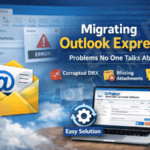
A network’s nodes share a distributed database called a blockchain. It is a tamper-proof, transparent, and secure method of storing data. Blockchain is used to create smart contracts, track assets, and record transactions.
What is blockchain?
Blocks of data are linked together using cryptography to form the blockchain, a type of distributed database. The preceding block is referenced in each block as well as its timestamp. Consequently, altering or hacking blockchain data is very difficult.
How does blockchain work?
Through a peer-to-peer network, blockchain stores and verifies data. A block is expanded by a new transaction each time it is made. This is followed by encrypting and connecting the block to the previous one. Each new transaction requires a repeat of this process.
New data blocks are constantly being added to the blockchain. As a result, altering or hacking the data on a blockchain is very challenging. Solana Blockchain Development Company is providing an excellent solution for blockchain.
The benefits of blockchain
There are many benefits to using blockchain technology. Some of the benefits include:
- Security: Blockchains are a very secure way to store data. A network of computers is used to distribute encrypted data on a blockchain. This makes it extremely challenging to alter or hack the data.
- Transparency: Storing data on a blockchain is transparent. On a blockchain, every transaction is public and available for viewing by anyone. Fraud or corruption is very difficult to happen as a result of this.
- Immutability: Blockchains prevent data from being altered or removed once they have been added. Blockchain is a very reliable method of data storage as a result.
Just a few of the advantages of blockchain technology are listed above. Blockchain has the potential to transform numerous industries and improve the security and effectiveness of our daily lives.
Blockchain development
Blockchain development is the process of creating and maintaining a blockchain platform. This process includes creating the infrastructure to develop and manage blockchain-based goods and services, such as cryptocurrencies, smart contracts, and distributed applications.
The skills you need to be a blockchain developer
To be a blockchain developer, you will need a strong understanding of the following skills:
- Programming languages: One programming language, such as Python, Java, or C++, is necessary for blockchain development.
- Distributed ledger technology: A blockchain is a form of distributed ledger technology (DLT), so you should be familiar with its fundamental concepts.
- Cryptocurrency: It would help if you comprehended how cryptocurrencies operate because blockchain is frequently used to create them.
- Smart contracts: Smart contracts are self-executing contracts that are stored on a blockchain. You must be familiar with how smart contracts operate.
- Security: Although blockchain is a secure technology, knowing the security risks associated with its development is crucial.
The tools and resources you need to get started
There are several tools and resources available to help you get started with blockchain development. Software development companies in Dubai are offering excellent tools; some of these tools and resources include:
- Platforms for building blockchains: Several blockchain development platforms are available, including Ethereum, Hyperledger Fabric, and Corda.
- Blockchain development guides: Several blockchain development guides are available online, including the Hyperledger Fabric Developer Guide and the Ethereum Developer Guide.
- Blockchain development communities: The Ethereum subreddit and the Hyperledger Fabric forum are just two examples of the many online blockchain development communities.
The steps involved in developing a blockchain application
The steps involved in developing a blockchain application are as follows:
- Choose a blockchain platform.
- Create a blockchain development environment.
- Develop the blockchain application.
- Test the blockchain application.
- Deploy the blockchain application.
In Conclusion
The field of blockchain development is expanding quickly and has a promising future. Blockchain development in the USA has the potential to transform a wide range of industries completely, and developers knowledgeable in this field will be in high demand. Now is the time to start learning if a career in blockchain development interests you. As a starting point, many resources are available, and the community is quickly expanding. So why are you still waiting? Now is the time to learn!
Here are some of the potential applications of blockchain technology:
- Financial services: Blockchain technology can make financial transactions more secure and effective. It can be used, for instance, to process payments or keep track of who owns what assets, like stocks and bonds.
- Supply chain management: Blockchain technology can track the flow of products and goods through the supply chain. By doing so, fraud may decrease while efficiency and transparency increase.
- Healthcare: Blockchain technology can securely store and share patient medical records. Cost-saving measures and better patient care may result from this.
- Government: Blockchain can increase the efficiency and transparency of government. It can be used, for instance, to keep tabs on government spending or to register voters.
- Other industries: A wide range of different industries, including real estate, insurance, and education, have the potential to use blockchain.
As blockchain technology develops, we anticipate seeing even more ground-breaking and novel applications. Now is the time to start learning if a career in blockchain development interests you.






Leave a Reply